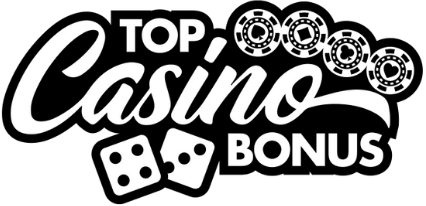Hole carding in blackjack: is it possible online?
Most rookies think online blackjack is just a numbers game. They memorize basic strategy charts, think they’ve cracked the code, and hope the chips fall in their favor. But let’s talk about a trick as old as the felt itself, hole carding. It’s a nuanced art from the smoky corners of brick-and-mortar casinos. Now the million-dollar question, can you hole card in online blackjack?
Table of contents
Defining hole carding and where it comes from
Hole carding is the skill of catching a glimpse of the dealer’s facedown card, the card you’re not supposed to see. In live-action games, sloppy dealers flash it now and then. A sharp eye and good timing? That’s all it takes to turn the odds a few fractions in your favor. I’ve seen players make careers out of nothing more than laser vision at the right moment.
What most folks don’t grasp is that hole carding isn’t cheating. Not if you’re just observing what’s inadvertently visible. It’s opportunistic, exploiting dealer errors, not manipulating the game. Casinos frown on it, sure, but the law draws a fine line. You’re not touching the cards or hacking the system.
Can this tactic work online?
This is where things start to unravel for those hoping to bring street smarts into the digital space. Online blackjack is a horse of a different color. Software doesn’t make rookie mistakes. Algorithms don’t inadvertently reveal the hole card. You’re not facing an overworked, undertrained dealer, you’re up against code written to be airtight.
Live casino games: a potential blind spot?
Alright, here’s where things get interesting. Live dealer blackjack, where you’re streaming an actual human dealing the cards in real time, might offer a tiny crack in the armor. I’ve sat through dozens of hours watching closely. Once in a blue moon, you’ll catch a dealer angle or poorly mounted camera giving away too much.
The rare lucky angle
It’s not common, but I’ve witnessed live streams, especially in newer platforms, where camera placement was less than ideal. If the dealer’s hand motions line up just right, and the video feed doesn’t cut resolution during movement, you might catch a shadow or pip. Still, compared to advanced blackjack strategy deviations, this is far more art than science.
You can’t bank on mistakes to build a consistent edge. And trust me, any streaming provider worth their salt audits dealers and camera angles constantly. Even platforms like BGO Casino or Betway have tightened ship after earlier, looser days.
Why online casinos are nearly hole card–proof
Let’s get technical. In RNG-based blackjack, the bread and butter of most online platforms, you’re not even dealing with physical cards. The hole card is generated at the same time as your hit request. There’s no “preview” or mechanical reveal. The card exists in the code, and code doesn’t leak.
Even in live dealer games from reputable houses like Borgata Casino, cameras favor the house. Overhead shots, strategic zooming, subtle angle warping, it’s all engineered to protect the card. Operators are incentivized to eliminate any edge you might wring out of observation.
The digital arms race
Don’t think these companies aren’t constantly updating tech to plug visual leaks. Touchscreen tables, motion-tracked dealing, randomized camera cuts, I’ve seen the evolution firsthand. What worked briefly two years ago is shut down now.
The psychology of exploitation: when to trust your gut
Players with a background in traditional blackjack often rely on instinct as much as data. I remember one rainy night in Tunica during the late ’90s, dealer had a nervous tic, always flashing the hole card extra high-speed. The crowd never caught it, but my gut screamed, “watch her hands.” I walked with a stack that night.
That sixth sense doesn’t mean squat online. Trusting your gut might get you to fold your hand early, but not because you saw something concrete. Hole carding is ultimately about visual leakage. Online? The visual bit is tightly controlled; your gut can’t read what isn’t exposed.
The future: could tech make online hole carding feasible?
There’s chatter, especially in underground forums, that augmented reality glasses connected to visual recognition software might parse dealer gestures for live games. It’s sci-fi nonsense right now. I’ve tested a few AI scripts myself, and even with sharp programming, nothing reliably predicts or decodes the hole card.
Even if someone found a cue, casinos would find it faster. Live casinos update frameworks more often than most folks change their bedsheets. Modern platforms like Betsafe monitor behavioral patterns and visual anomalies automatically. Try exploiting one of those shops? You’ll get flagged, limited, or straight booted.
Where can the effort actually pay off?
You want edge play in online blackjack? Channel that energy into strategy deviations based on deck composition and betting patterns. Exploiting shuffle logic, card sequencing, or weak promotional structures, now that’s where you build a long-term advantage.
Ignore the snake oil about machine-reading mechanisms or pixel analysis. The gold’s in understanding probabilities so well you play ahead of the dealer’s hand before it’s even picked. Combining sound math with patience is where veterans separate from dreamers.
Final thoughts: know where the edge lies
If you’re staring at your screen hoping to catch the hole card online, you’re chasing shadows. Real edge gamers, the maestros who stay profitable year after year, understand the terrain they’re playing on. They don’t waste time trying to transplant real-world tricks into systems designed to block them.
Keep your eyes sharp where it counts: game design, payout tables, deck penetration. Master those and you’re not just spinning wheels, you’re climbing the ladder. Truth is, online hole carding isn’t just rare, it’s practically mythical. Focus your craft where the return actually lives.





0 Comments